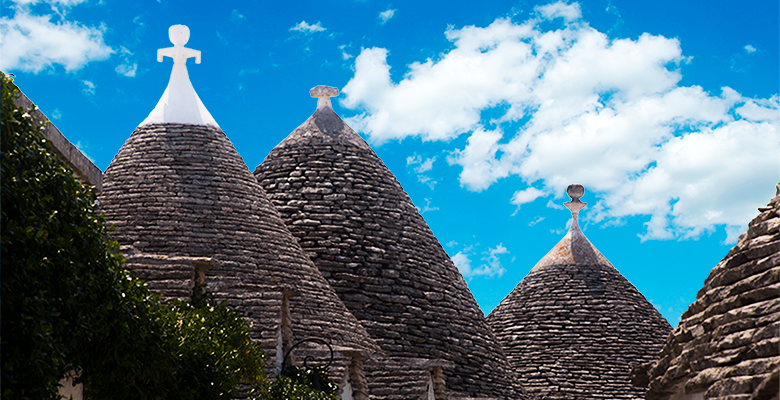30.10.2017
Discovering ancient stories and traditions.
Each place has its own little secrets between stories and legends, places to discover and treasures of taste to appreciate. In that context, Apulia, the birthplace of Capoforte wines, reveals itself as a land rich in ancient history and undiscovered traditions. In this new article, you can discover three curious facts that you may not know about one of Belpaese's most beloved regions.
The origin of the Trulli. Traditional dry stone constructions with pointed roofs, the trulli date back to prehistoric times: already then the Valle d'Itria hosted some settlements where the “tholos”, typical vaulted structures used to bury the dead, began to spread. However, the oldest trulli that we find today in Alberobello date back to the fourteenth century: it was at that time that what seemed to be an uninhabited land was assigned to the first Count of Conversano by Roberto d'Angiò, prince of Taranto and later King of Naples, for the services rendered during the Crusades. The area was then populated again by moving entire settlements from adjacent feuds and imposing on the new settlers the dry mortar construction, so that the houses could be quickly dismantled to avoid taxes on the new settlements imposed by the Kingdom of Naples.
Olives and oil. The first evidence of a regular consumption of olives in the Apulian territory dates back to 10,000 years ago. It is hard to imagine an older tradition! Grounds and geographical location were - and are still today - perfect for the cultivation of olive trees, thanks to the mild climate and the presence of plains and hillsides. From harvesting to cultivation, Phoenicians and Greeks introduced new agricultural techniques to transform an activity based on chance and casual collection into a rational cultivation. Plains and hills progressively took on the aspect they still maintain today, thanks to some 380,000 hectares of olive groves with more than 60 million plants.
The white of Ostuni. Did you know that in the 1800s the town of Ostuni made painting the houses of the old town in white mandatory? It was not an artistic twist nor just a whim: the sunlight reflected by the white painted structures had in fact the function of blinding the enemies attacking the city, providing the inhabitants with a strategic advantage. Certainly, the risk of military assaults from neighbouring cities is far less likely than ever before, but that tradition remains in all its beauty.






